Day One is our proposal for a new park in Grønmo (Norway).
A former waste disposal site, the new Grønmo is not just a park but a new territory resembling a lunar landscape. It’s mostly made by of a continuity of craters, sometimes inhabited, sometimes pure landscape / land-art elements, hosting outdoor activities.

H.D. Warren D.D: “Lunar Day“ from the book “Recreations in astronomy”, 1879
Upon the main theme of the lunar territory, a sequence of different natures is declined, following the uses and responding to the topography. The idea of nature is far from the idealistic image of “green” that’s expected in a conventional park. Here, it is a man made nature, dry and hard, just coming from the actual state of the Grønmo site. Hills of topsoil, mounds of sand and expanses of gravels, followed by rocks and mineral paths, leave place to grass and trees only in some specific areas. This landscape slowly leads to the main entrances of the Marka forest and, being in deep contrast with this one, it will keep the memory of a nature which has been violated by man and that’s only now turning into something else. At the same time it follows the idea of a world without objects where the shape of the landscape itself works as furniture or shelter. The idea of a “desolate” land creates a connection to its former use as a landfill, while transforming it in a active territory for contemplation, reflection, production, leisure.

The project investigates objects’ dematerialisation, information technology and the role of immaterial labor in contemporary society, in order to give shape to a physical, autonomous and self-reproductive knowledge infrastructure.
From almost an icon for garbage’s production and waste, the new meaning and image of the future park will be the path, through recycling, to dematerialisation and production of ideas. In the end it aspires to embody the representation on Earth of the “utopia” of a world without objects.
Minimal entities working together can develop important cultural enterprises starting from very few means, sharing spaces and producing a network of competences, cooperation, ideas and work.
The Grønmo park will provide general infrastructures and shared facilities which are the basic needs for those kinds of works and become a social tool for cultural production and knowledge exchange. At the same time its venues and exhibitions will be, mainly, produced within the park itself.
The premise is a landscape which is not only a scenography, but a new topography that works as a service platform.
(Full text below)



CLICK TO ZOOM:








DAY ONE,
Microcities
From almost an icon for garbage’s production and waste, the new meaning and image of the future Grønmo park will be the path, through recycling, to dematerialisation and production of ideas. In the end it aspires to embody the representation on the Earth of the “utopia” of a world without objects.
This visionary approach has the opportunity to become a reality in this very specific location and from this moment in time, as information technologies allow to work and produce out of very few means, generating almost no waste.
Here, the topography and landscape are merged with the recycling and learning facilities and with areas dedicated to new kinds of work and performance.
WORKING ECOLOGY
In the current state of economical crysis, a lot of subjects are facing the need to reinvent the concept of working. Through self-organization and promoting research and innovation, a parallel, diffusive system of production was born in a wide range of fields: from music to media art, to journalism, to design, to information technology.
Minimal entities working together can develop important cultural enterprises starting from very few means, sharing spaces and producing a network of competences, cooperation, ideas and work.
The Grønmo park will provide general infrastructures and shared facilities which are the basic needs for those kinds of work and become a social tool for cultural production and knowledge exchange. At the same time its venues and exhibitions will be, mainly, produced within the park itself.
The premise is a landscape which is not only a scenography, but a new topography that works as a service platform. It provides electricity (obtained from waste), internet access, flexible spaces to work/study and to perform; tools, archives, shared knowledge and the opportunity to meet, to hybridize processes and media, to understand emerging cultures.
The users will “give back” to Oslo and to the world the possibilities they have got, animating Grønmo and sharing their experience with the visitors of the park. They will be able to give expertise, to teach, organize festivals and events taking place in the park itself during the years. In this way the park becomes a hub in the recycling and in the creation process, while the specific location will give a material visibility to workers usually acting too much behind the curtains.
The program is a cyclical activity produced and “consumed” in the park itself, an ecosystem of cultural production and exchange. The different areas are activated at different times of the day and of the year, guaranteeing an ever changing combination of uses and processes, attracting a varied public.
This uncommon program for a park, containing working spaces and productive activities, is a medium that provides social integration and new work opportunities, also in connection with the neighborhood, while making Grønmo self-sustainable in terms of cultural offer and entertainment.
New Grønmo will not be used only “for educational purposes and help visitors to better understand waste and recycling issues” but to get to understand the possibilities of living/producing with a minimal consumption and to come in close contact with contemporary (cultural and social) issues .
Topography for leisure
While the interiors of the craters serve as shelters for creative and cultural activities, the topography all around is a very innovative scenario for leisure and sport.
The two worlds are in a continuous communication, since creative work cannot exist without places for inspiration and physical activity, while the users of the exteriors spaces are conducted to experiment and get to know the work being done inside the craters. During time the outside areas become also platforms where to exhibit and perform the results of the work done inside the craters, as well as informal meeting places for the users. The single inhabited elements can evolve through time, hosting new technologies and always different types of production following the ever-changing needs.This process is allowed by the “weakness” of the plan, thought to be generic and to act only as an enzymatic element. A flexible system to be colonized and supporting generative processes.
When the landfill system will be dismantled, the outside craters can support new areas for work or just stay as they are, depending on future needs . At the same time the inhabited craters can be demolished or enlarged, adapting to the evolution of the uses.
The program puts different fields in relationship, promoting an uncommon contamination among subjects. At the same time the spaces can be colonized by different activities, the plan never being fixed.
The built environment is made up by light constructions shaped as craters, connected one another but that can be independent in their structure and uses. This allows fast construction and phasing, so that the program can be developed through time.
The craters are composed by a double exterior skin that hosts the technical areas and service facilities, requiring a lower lever of heating. This areas work as a buffer zone that insulate the interior working areas. The exterior skin is covered with soil and becomes part of the continuous topography of this new territory.
The open air area in the centre is a gathering place or an exhibition one, it guarantees a high access to sunlight and presents a micro-climate, repaired from wind and cold air.
Water is collected in this patios in some specific areas, then it’s in part recycled for the working areas and in part used to reflect sunlight into the craters.
The patios can be temporarily covered with inflatable structures in order to host some indoor events during the year. They become temporary semi-interior spaces.
OPPORTUNITIES FROM WASTE
The park is also self sufficient in terms of energy as the “fuel” for the whole project comes directly from waste:
The needs for electricity are covered from on-site production through biogas obtained from waste.
At the same time this new territory will also be fed by the surrounding Marka forest, as the pellet extracted is used to heat the craters.
People can contribute to the project giving their furniture that would be trashed in order to be used in the new spaces devoted to production, directly linking the reusing/recycling process to the creation one.
Biogas (extracted from anaerobic digestion of waste) will become the fuel for buses that will work as shuttles for the park, promoting events and making a “clean”connection and transportation for Grønmo and through Grønmo. During time they can be substituted by electric buses that can be recharged in the park itself.
A whole new territory…
There are no borders between landscape and built environment as both result in a new artificial inhabited topography whose geology is given by layers of artificial and natural grounds.
The new Grønmo is not just a park but a new territory resembling a lunar landscape. It’s mostly made by of a continuity of craters, sometimes inhabited, sometimes pure landscape / land-art elements, hosting outdoor activities.
…recycling the existing landscapes.
Upon the main theme of the lunar territory, a sequence of different natures is declined, following the uses and responding to the topography. The idea of nature is far from the idealistic image of “green” that’s expected in a conventional park. Here, it is a man made nature, dry and hard, just coming from the actual state of the Grønmo site. Hills of topsoil, mounds of sand and expanses of gravels, followed by rocks and mineral paths, leave place to grass and trees only in some specific areas. This landscape slowly leads to the main entrances of the Marka forest and, being in deep contrast with this one, it will keep the memory of a nature which has been violated by man and that’s only now turning into something else. At the same time it follows the idea of a world without object where the shape of the landscape itself works as furniture or shelter. The idea of a “desolate” land creates a connection to its former use as a landfill, while transforming it in a active territory for contemplation, reflection, production, leisure.
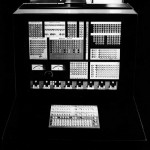
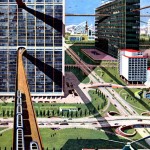
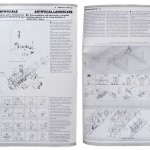
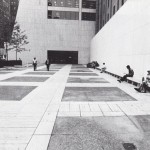
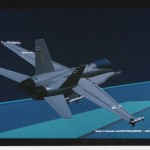
Leave a Reply